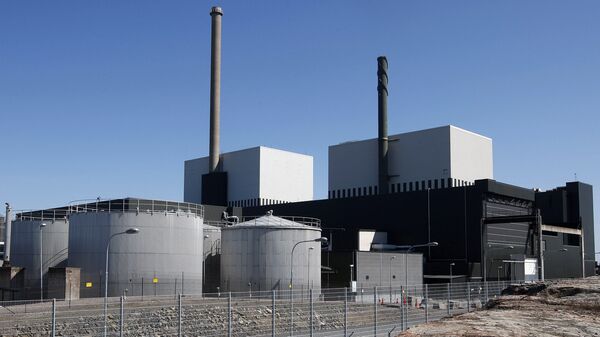Despite being set to close down one of its nuclear power plants for environmental safety-related reasons at the end of the year, the state-owned Swedish power corporation Vattenfall reached an agreement to help build new ones abroad with Estonia.
“We have agreed that we will work together on a project to see if it is possible to build small modular reactors in Estonia”, Torbjörn Wahlborg, the head of electricity production at Vattenfall, told national broadcaster SVT.
Vattenfall's Estonian partner, Fermi Energia, is already doing the planning of the exact location of the nuclear power plants. According to Vattenfall, the NPPs can be in place in ten years.
“Yes, it is a fairly concrete project. There are two locations that are potential,” Torbjörn Wahlborg said.
However, the decision to build new NPPs abroad while consistently closing down them at home has raised eyebrows.
“I think it is very remarkable that you shut down nuclear power in Sweden at the same time as you invest in nuclear power in the Baltics. I would have liked to have seen something similar done in Sweden”, Lars Hjälmered, the Moderate party's energy policy spokesperson told SVT.
“Vattenfall is thus investing in new nuclear power in Estonia. All while closing Ringhals reactors prematurely?” Moderate MP Jan Ericson tweeted.
Vattenfall satsar alltså på ny kärnkraft i Estland. Och stänger samtidigt Ringhalsreaktorer i förtid?
— Jan Ericson (@Ericson_ubbhult) December 12, 2020
”Vattenfall fördjupar samarbetet om små modulära reaktorer i Estland” https://t.co/GybM3zMVKJ
“State-owned Vattenfall shuts down nuclear power in Sweden but builds new reactors in our neighbouring countries. The government wants to close down Bromma and delays Arlanda's expansion but is investing in new airports in Vietnam. Do you think that the coalition government policy is logical?” Moderate MP Lars Beckman tweeted.
Statliga vattenfall lägger ned kärnkraft i Sverige men bygger nytt i våra grannländer. Regeringen vill lägga ned Bromma och försenar Arlandas utbyggnad men investerar i nya flygplatser i
— Lars Beckman (@beckmansasikter) December 12, 2020
Vietnam. Tycker du att mp/s regeringens politik är logisk?
https://t.co/nbZJIyqbgL
Environment Minister Isabella Lövin refused to comment on Vattenfall's nuclear cooperation in Estonia, instead referring to Minister of Trade and Industry Ibrahim Baylan. He, in turn, referred all questions back to Vattenfall.
Since 1979, when the first major nuclear accident occurred at the power plant on Three Mile Island near Harrisburg, Pennsylvania, attitudes to nuclear power in Sweden have changed. A 1980 referendum decided on a gradual phasing out and decommissioning. No further expansion of nuclear power would occur, whereas existing reactors would be phased out at the rate necessary for electric power to maintain employment and welfare.
In 2005, the Barsebäck NPP was closed, not least due to its proximity to the Danish capital of Copenhagen and the Danes's decades-long complaints. Subsequently, two of the three reactors in Oskarshamn were closed, while a decision was made to close two of the four reactors in Ringhals. So far, the power production has been replaced by power increases at other reactors and the expansion of wind power.
Sweden currently has 12 reactors exclusively for electricity production, of which seven are in commercial operation. All of them are light water reactors and use enriched uranium as fuel.


